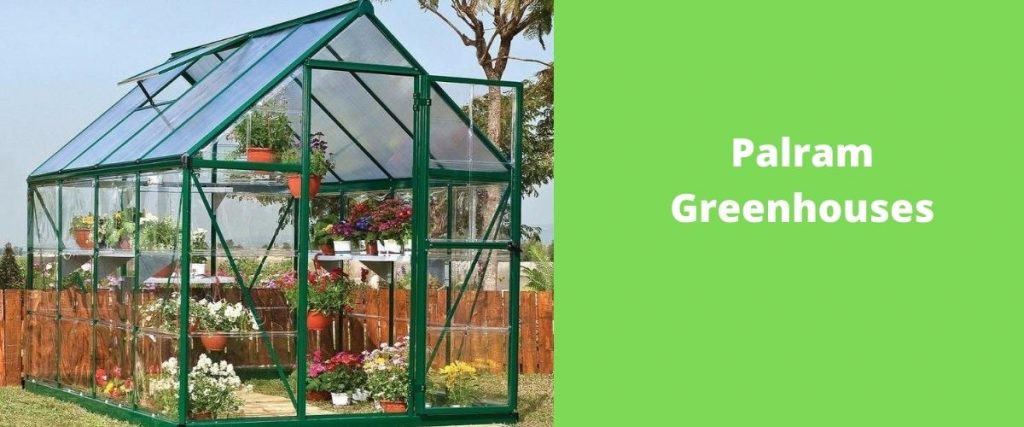The answer is yes, you can!
You can use a wood burner stove in a greenhouse but there are some considerations. You must have a safe flue to let the smoke out properly. You must also have a good quality stove that won’t leak carbon monoxide. A carbon monoxide alar is also essential. Consider the size of the unit vs the size of the space you are heating as you may end up making it too hot.
After that you can basically go as simple or as complex as you like from a stand alone burner to a burner heated system using a water boiler and even multiple small burners.
Winter!
Depending on where you live, winter may be a lovely experience with the odd flurry of snow but generally in the UK its cold and it’s wet! For gardeners it’s often a time for fixing sheds, clearing out old plants, and looking ahead to spring. However, you may just be able to warm up those cold afternoons in the greenhouse with a wood burner!
While an unheated greenhouse may accomplish a lot, a greenhouse heating system is a must during the winter months for many reasons.
How Heat Behaves in a Greenhouse
It helps to have a basic understanding of how heat is produced and wasted when designing a heating system for your greenhouse. A greenhouse can lose heat in four different ways:
- Heat flows from one medium to another through conduction. For example, from the greenhouse’s interior to the outside through the frame and glazing.
- Convection is the air movement produced by a temperature difference: hot air rises from a heater while cold air is sucked in at the bottom.
- Without the need for a medium, heat may be transferred away from an item through space. Radiated heat can be absorbed, stored, or reflected via greenhouse glass.
- Cold air can enter through cracks beneath doors and vent windows, while warm air can leave through glazing gaps. Warm air escapes via gaps in the ceiling of a greenhouse, while cold air is drawn in through vents near the bottom.


What’s all the fuss about wood heating?
Wood is an appealing alternative fuel for greenhouse heating since it can be sustainable, can be produced locally, and is typically less expensive than other fuels.
While wood is not for everyone, an increasing number of farmers and gardeners are using it as a cost-effective heating option for their operations. Heat may come from a variety of fuel option, including fuelwood, waste wood, and biomass. There may be cause to consider a boiler rather than just a wood burner but to justify the expense of constructing a wood-fired boiler, an adequate supply of fuel at a reasonable cost is required.
It is worth considering where you may store your wood. Keeping it in the greenhouse might mean a few more insects make their home there. The green house will certainly be warm in the summer but may get too humid for wood storing and cause mould to grow. A sheltered external store is best.
A wood-burning furnace installed outside the greenhouse is an interesting option. But perhaps not the most efficient. It would have to stay warm in cold weather, however, using it to heat an internal water system could be a very effective system for larger greenhouses. It also reduces the risk of carbon monoxide build up as the burner is outside.
The Burning Process
Wood combustion requires three things: fuel, air, and heat. When all three are present properly, combustion is self-sustaining since the wood produces enough heat to start another fire.
Some technology regulates the quantity of heat by regulating the volume of air in the room. This, however, is a poor strategy since it results in “smoldering” and the discharge of contaminants.
Instead, it is preferable to use equipment that regulates the rate at which heat is produced by regulating the rate at which fuel is delivered into the fire.
During the burning process, wood passes through three stages. In the first stage, the wood is heated to allow moisture to escape.
In the second step, the wood begins to degrade chemically, and volatile substances evaporate. These gases must be heated to about 1,100 degrees Fahrenheit to burn.
If not, smoke is generated, leading to the formation of creosote on heat exchange surfaces and chimneys.
When the volatile gases have been released in the third stage, the remaining material burns as bright embers at temperatures exceeding 1,500 degrees Fahrenheit.
All three stages of a fire may occur at the same time.
How to Find the Perfect Wood Heating System for your Greenhouse?
A wood-fired heating system is a significant investment that should be carefully considered to ensure effective and long-term performance.
Spending a bit extra upfront on a machine that will decrease handling, enhance efficiency, and ensure a safer operation pays off.
The burner and system should be large enough to compensate for heat losses. A unit that is too big may result in inefficient fuel consumption and excessive smoke and pollution.
During warm weather, the installation of modular units will allow for the extension of the growing area and increased fuel economy.
As a result, having two tiny units rather than one large one is generally preferable.
The majority of the units are boilers because a heated water system makes it easier to get heat where you need it.
The temperature of the water may be controlled to heat the root zone. Landscapers or arborists may provide solid wood or chips for little or no cost, but it will take time to size it to fit the firebox.
Where to Install a Wood Heating System?
A shorter supply pipe is achieved by locating the burning unit within the greenhouse.
An interior installation also has the advantage of heating the house using heat that would otherwise be lost to the outside air through the appliance’s jacket.
The outdoor installation will prevent smoke from entering the greenhouse.
When installing indoors, extra attention must be paid to changes in drought conditions caused by other activities in the home.
Choose a device that can provide the fire with both main and secondary air.
Electronic controls manage the pace of combustion, draught inducers give the proper quantity of air, heat storage absorbs the excess heat, and heat exchangers collect the heat of combustion before it escapes up the chimney in many modern designs.
Take Away
Wood stoves are frequently claimed to be terrible for the environment due to the carbon emissions they emit.
Wood burning may be part of a carbon-neutral process if done correctly, with the carbon produced from burning wood being balanced out by the carbon absorbed by the tree during its lifespan.
It is beneficial to the ecology to burn wood. Because logs are a low-carbon fuel source, using wood-burning stoves is a wonderful method to reduce carbon emissions.
Burning wood can also help you save money on your heating expenses, especially if you live “off the grid” and have to rely on more expensive oil to keep your house warm.



